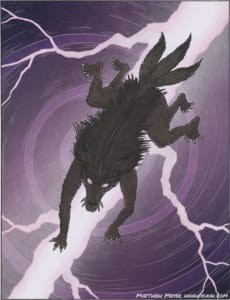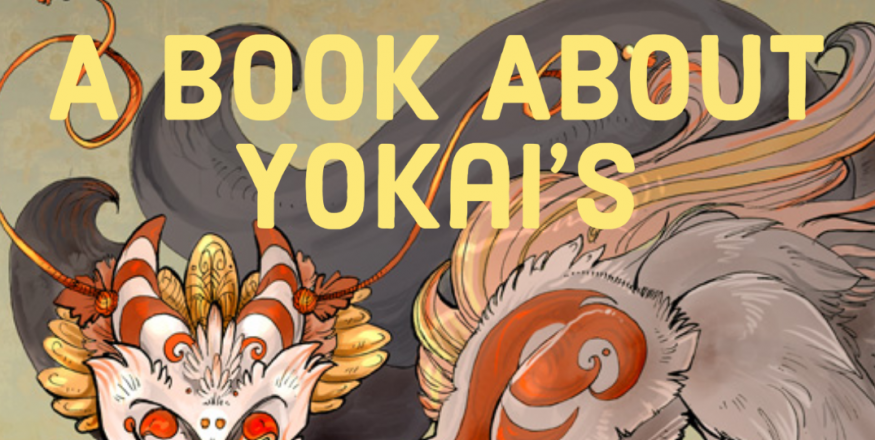 x
x
"雷獣"444Please respect copyright.PENANA1Rf1RcjSZS
"らいじゅう"
Translation: thunder beast444Please respect copyright.PENANAPXKhXzoUki
Habitat: thunderbolts444Please respect copyright.PENANAFv7y1zziwq
Diet: probably carnivorous
Appearance: A raijū is the embodiment of lightning into an animal form. They had long, sharp claws and ferocious faces. Generally, they were thought to look like wolves, dogs, tanuki, or even weasels or cats. Far more fanciful forms existed too. Sometimes raijū were said to look like little dogs, but with four rear legs and two tails. Sometimes they were said to look like insects or crustaceans. Others looked like miniature dragons. Even more exotic raijū were said to be chimerical monsters composed of many different animals.
Behavior: Raijū live in the sky—a world which was totally off limits to humans before the 20th century. Because of this, almost nothing can be said about their true nature or behavior. They ride bolts of lightning to earth when thunder claps, and create mayhem wherever they land. For seemingly no reason at all they attack buildings, starting fires and causing mass destruction.
Interactions: Long ago, raijū were seen as divine beasts, akin to the thunder gods (raijin). Nothing was known about them except that they were fast, merciless, and deadly. Whenever lightning struck, people believed that a raijū had been sent by the gods to punish them for some reason or another.
Small raijū like burrow into humans’ belly buttons to hide from angry thunder gods. This is the origin of a Japanese superstition which says to cover your belly button when you hear thunder.
Origin: Long ago the raijū was one of the most well known and most feared supernatural creatures in Japanese folklore. Yet today it is relatively minor, and practically unknown to the average person. This drastic reversal is due to advances in science during the 19th and 20th centuries. In the Edo period and earlier, lightning and other natural disasters were believed to be the work of the gods. Only gods had the power to shake the earth and send fire from the sky. Lightning strikes so quickly and so randomly that it is impossible to observe. But it has very observable effects: the terrible booms that shake the ground, the odd burn patterns on the things it strikes, and the fires that it ignites. In old Japan when buildings were all made of wood and closely packed together, a single lightning strike could cause a lot of destruction. The damage caused by lightning was indiscriminate—it destroyed everything from peasant hovels to imperial palaces. Lightning was rightly feared by all.
During the Edo period, “real” raijū were popular sideshow attractions, along with kappa and mermaids. Mummified and taxidermined remains of cats, monkeys, and dogs were presented as raijū and toured around the country in traveling shows. Viewers could pay a few coins to get a safe, up-close look at a dead raijū in a glass case.
During the Meiji period, society was rapidly transformed due to the influx of foreign science and technology. Yōkai like raijū were one of the first victims of this modernization. People were actively discouraged from holding on to superstitions because they were perceived as an embarrassment to the country. New understandings about electricity and lightning, and the invention of the airplane explained away the raijū’s most defining features—its life in the unreachable sky, and the god-like power of lightning. Once those mysteries were gone, the raijū had no more power over peoples’ imaginations, and so it was quickly forgotten.
Legends: Because they were so scary, raijū are usually presented in stories as beasts to be slain, like oni. The most famous example is probably the nue, which attacked Kyōto and was slain by Minamoto no Yorimasa in 1153. Another legend involves the samurai Tachibana Dōsetsu. One night he was taking shelter from a storm under a tree when lightning struck. He drew his sword just in time to strike the bolt. When the smoke had cleared, there was a dead raijū on the ground next to him. Afterwards, he named his sword Raikiri, or “lightning cutter.”
ns18.222.24.251da2





















